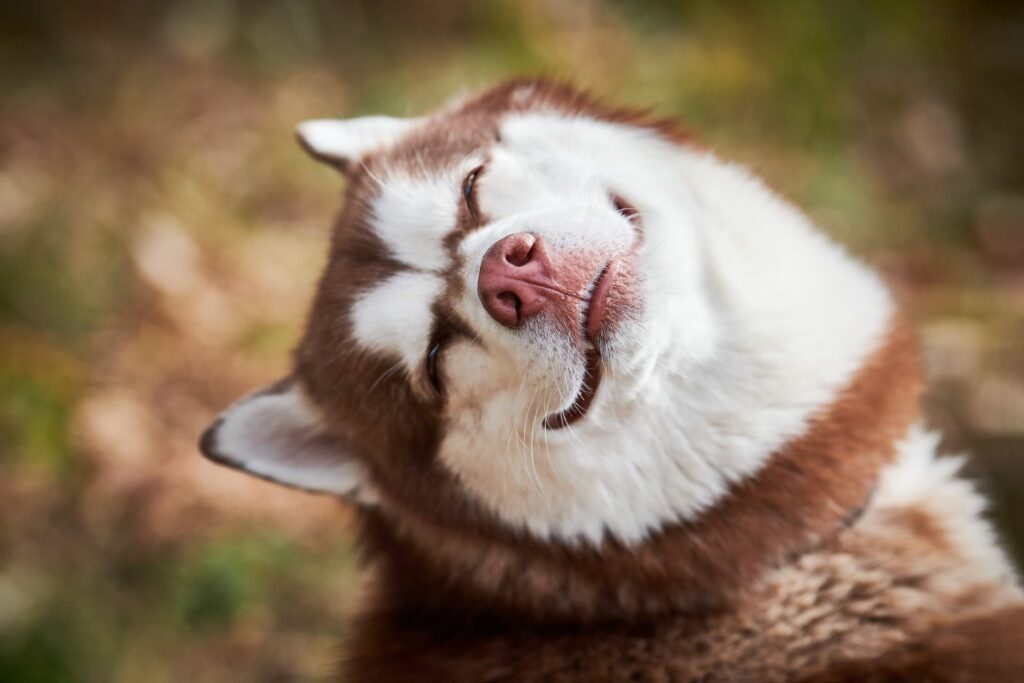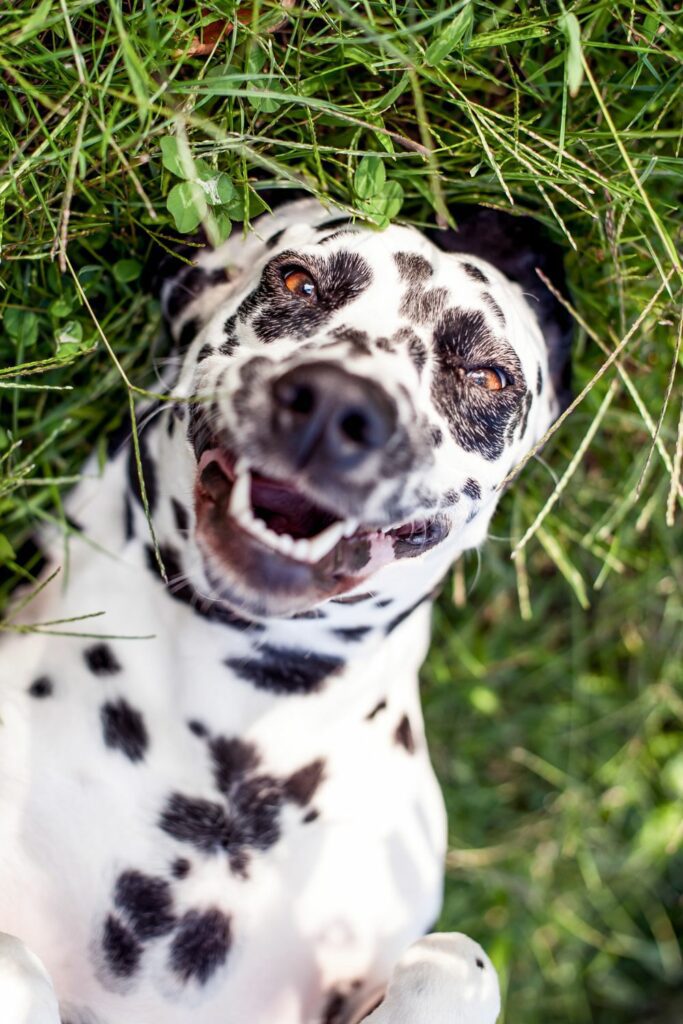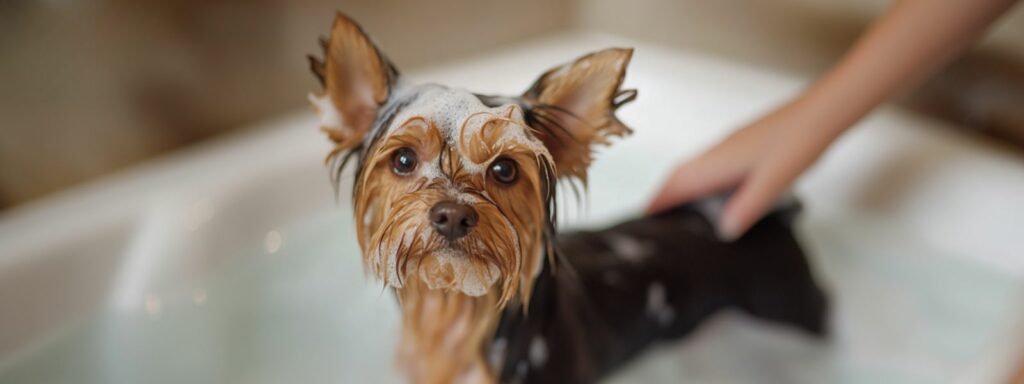The Importance of Grooming Your Dog
 Cecilie Hemsen Berg
Cecilie Hemsen Berg
Grooming is a fundamental aspect of dog ownership that goes far beyond aesthetics. It plays a crucial role in maintaining your dog’s overall health and well-being. Regular grooming enhances the condition of your dog’s skin, fur, teeth, gums, eyes, and ears, and provides an opportunity to quickly detect any signs of physical issues like lumps, scratches, tics, rashes etc. A healthy and fit dog is attentive and active, with glossy, fragrant fur, clean ears, clear eyes, and pleasant breath.
Proper claw clipping is important for the joints, and maintaining oral hygiene can protect vital organs by preventing the spread of inflammation from the oral cavity. Grooming sessions also provide a wonderful opportunity to strengthen the bond between you and your dog. Furthermore, regular grooming can help reduce veterinary expenses.

Set aside enough time to ensure a calm and pleasant experience for both you and your dog. It’s important for your dog to become accustomed to and enjoy activities like brushing, ear cleaning, claw clipping, and teeth brushing. It will also make your dog more at ease at the vet’s office. Offer praise and treats throughout the process to create a positive association and make grooming more enjoyable for your dog. Let’s explore the various reasons why grooming is crucial for your dog’s health and happiness.
Skin and Fur Health
One of the most visible benefits of grooming is the maintenance of your dog’s skin and fur. Regular brushing helps remove dirt, debris, and loose hair, preventing matting and tangling. Matted fur can be painful and lead to skin infections if left unattended. Brushing also stimulates the production of natural oils, which keep your dog’s coat shiny and healthy. It’s an excellent time to check for any abnormalities like bumps, rashes, or parasites that might need veterinary attention.
Grooming Tips for Different Coat Types
Different coat types require different grooming techniques and frequencies. Here’s a guide to help you manage various types of dog coats:
- Short-Haired Dogs: Brush once a week to remove loose hair and distribute natural oils. Use a bristle brush or a rubber grooming mitt.
- Long-Haired Dogs: Brush daily to prevent tangles and mats. Use a slicker brush and a detangling spray if necessary.
- Curly-Haired Dogs: Brush every other day to prevent matting. Use a slicker brush and comb to ensure thorough grooming.
- Double-Coated Dogs: Brush several times a week, especially during shedding season. Use an undercoat rake and a slicker brush.
Seasonal Grooming Considerations for Skin and Fur
Spring
Pollen Season: During spring, pollen is abundant and can stick to your dog’s fur and skin, causing allergic reactions and irritations. After being outdoors, it’s important to wipe your dog’s feet, belly, and face with a wet cloth. This simple practice helps remove pollen, keeping your dog comfortable and minimising the amount of pollen they bring into your home. Regular cleaning promotes a healthier environment for both your dog and your family.
Shedding: Many dogs shed their winter coat in spring, so increase brushing frequency to manage loose hair and prevent matting. Use a de-shedding tool to help remove the undercoat and reduce shedding.

Summer
Heat Management: Summer heat can be challenging for dogs, especially those with thick coats. Regular brushing helps remove loose hair and improves air circulation to keep your dog cool. Consider trimming long-haired breeds, but avoid shaving down to the skin as the coat provides some protection from the sun. Do not shave dogs who have a double coat.
Tick and Flea Prevention: Summer is peak season for ticks and fleas. Check your dog’s fur regularly and use appropriate tick and flea prevention treatments. Grooming helps you spot and remove these pests promptly.
Autumn
Shedding Season: Similar to spring, autumn is another shedding season for many dogs as they prepare for their winter coat. Increase brushing frequency to manage shedding and prevent mats from forming.
Debris Removal: Autumn leaves and debris can get tangled in your dog’s fur. Regular brushing and baths help remove these elements and keep your dog’s coat clean.
Winter
Dry Skin: Cold weather and indoor heating can cause dry skin in dogs. Regular brushing helps distribute natural oils and prevent dryness. Consider using a moisturizing spray or conditioner specifically designed for dogs.
Bathing: Bathe your dog less frequently in winter to avoid stripping their coat of natural oils. When you do bathe them, ensure they are thoroughly dried to prevent chills.
Teeth and Gum Health
Oral hygiene is often overlooked in dogs, but it’s just as important as it is for humans. Regular brushing of your dog’s teeth can prevent plaque buildup, which can lead to periodontal disease, bad breath, and even more severe health issues affecting the heart, liver, and kidneys. Using dog-specific toothpaste and brushes makes the process easier and more effective. Other options are children’s toothbrushes with soft bristles, dental ‘wipes’ and finger toothbrushes.

Incorporating dental chews and chew-toys can also help maintain your dog’s oral health between brushing sessions.
Your dog does not know how to “spit out” their toothpaste after brushing, so we need to make sure the toothpaste we use is safe for dogs. Human toothpaste usually contains fluoride and xylitol which is very toxic to dogs.
Eyes and Ears
Keeping your dog’s eyes and ears clean is crucial to preventing infections and other health issues. Regularly check your dog’s eyes for signs of redness, cloudiness, or discharge, which could indicate an infection or other problems. Clean the area around the eyes with a damp cloth to remove any debris.
Home Remedy for Eyes: To soothe irritated eyes, you can use a saline solution. Mix 1 teaspoon of salt in a cup of warm water, let it cool, and use a clean cotton ball or gauze pad to gently wipe around your dog’s eyes. This helps remove irritants and reduce inflammation.
Home Remedy for Ears: Similarly, inspect your dog’s ears for signs of wax buildup, redness, or an unpleasant odour. Use a veterinarian-recommended ear cleaner if necessary to keep them clean and healthy, ensuring you never insert anything (like earbuds) deep into the ear canal to avoid injury.
A simple home remedy for cleaning your dog’s ears is a mixture of equal parts water and apple cider vinegar. Dampen a cotton ball with the solution and gently wipe the inside of your dog’s ear flap. This helps break down wax buildup and maintains a healthy ear environment. Avoid using this remedy if your dog has any open sores or infections in the ears, and always consult your vet if you are unsure.

Claws and Joint Health
Trimming your dog’s claws is essential for their comfort and mobility. Overgrown nails can cause pain, lead to infections, and even affect your dog’s gait, potentially leading to joint issues. Regularly trim your dog’s nails, being careful not to cut into the quick (the part of your dog’s nail that contains blood vessels and the nerve), which can cause bleeding and pain. If you’re unsure about how to trim nails properly, consult your vet or a professional groomer for guidance. Keeping your dog’s claws at an appropriate length helps maintain joint health and prevents discomfort.
Trimming your dog’s claws can also help prevent them from splitting. When a dog’s nails become too long, they are more prone to catching on surfaces and breaking, which can lead to painful splits. Weekly trimming keeps the nails at a manageable length, reducing the risk of splitting and associated discomfort or injury.
Sore paws can be treated with a paw balm. Remember that hot surfaces such as tar and sand can damage the paws. Paw socks could be a great investment.
Bonding and Behavioral Benefits of Grooming
Grooming sessions are more than just a health routine; they’re a chance to bond with your dog. The time spent grooming can strengthen the trust and relationship between you and your pet. Many dogs enjoy the attention and physical contact, which can be soothing and reassuring. Regular grooming also acclimates your dog to being handled, making it easier for vets to conduct thorough examinations and treatments without causing undue stress.
Regular Grooming Eases Vet Visits
A dog that is used to being groomed regularly is generally more comfortable being handled by strangers, including veterinarians. This familiarity with touch can make vet visits less stressful and more efficient. When a dog is accustomed to having their teeth brushed, ears cleaned, and nails trimmed, they are less likely to resist these procedures during a medical exam. This can lead to more accurate diagnoses and more effective treatments.
Calming Remedies for Grooming
Grooming can be a stressful experience for some dogs. Here are four effective natural remedies to help reduce anxiety and make the process smoother:
1. Chamomile
Chamomile is known for its calming properties and can help soothe an anxious dog. Offer a small amount of cooled chamomile tea or look for chamomile supplements and treats designed for pets. Chamomile can help relax your dog and make them more comfortable during grooming.

2. Lavender
Lavender has a soothing scent that can help calm nervous dogs. Use lavender oil in a diffuser or spray a diluted solution around the grooming area. Ensure the oil is properly diluted, as concentrated essential oils can be harmful to pets. The calming aroma can help reduce anxiety and create a more relaxed environment for grooming.
3. CBD Oil
CBD oil, derived from hemp, is known for its calming effects on dogs. Use a product specifically formulated for pets and consult your veterinarian for the proper dosage. CBD oil can help reduce anxiety and make your dog more tolerant of grooming activities.
4. Exercise
Ensure your dog gets plenty of exercise before grooming. Physical activity can help reduce anxiety and pent-up energy, making your dog more relaxed and cooperative during grooming. A tired dog is often a calmer dog, making the grooming process easier.
5. Keep Sessions Short
If your dog is very nervous, consider breaking grooming sessions into smaller stints. For example, do one paw at a time when trimming nails or brush in short intervals. Gradually lengthening the sessions as your dog becomes more comfortable can help reduce anxiety over time.
Conclusion
Grooming is a multifaceted practice that plays a crucial role in your dog’s overall health and well-being. From maintaining skin and fur health to ensuring optimal oral hygiene, clean eyes and ears, and well-trimmed claws, grooming encompasses a range of activities that contribute to your dog’s comfort and health. Beyond the physical benefits, grooming strengthens the bond between you and your dog, making them more comfortable with handling and reducing stress during vet visits. By making grooming a regular part of your dog’s routine, you’re investing in their long-term health and happiness, ensuring they remain a joyful and integral part of your life for years to come. Lastly, regular grooming can also help reduce veterinary expenses.

